Last Updated on October 25, 2023
The classic set of DnD dice, a D4, a D6, a D8, a D10, a D12, and of course, a D20, have held a special spot in game shops and RPG players’ hearts for decades.
Made popular by the original version of DnD, these dice have been adopted by tabletop and role-playing games of all kinds.
Nowadays, RPGs and dice are practically synonymous, and diceless RPGs are bizarre. Randomization is a core feature of DnD and dice are the shiniest way to achieve that goal.
Random number generators are fine, but dicemania is well documented. After all, who could resist rolling a handful of metal dice or color coordinating dice sets for different characters?
Whether you’re new to RPGs and are just trying to get a handle on these plastic polyhedrons or you have dozens of dice and are looking for some interesting trivia, this article will have plenty to keep you interested and informed about dice.
The Dice of DnD
These 6 dice comprise the classic DnD set. While many people enjoy collecting multiple instances of a single type (accumulating several D20s or D10s), because of the influence of DnD dice are often sold in sets that include one of each of these kinds of die, plus an additional D10 to be used to roll for percentiles.
D4 (Tetrahedron)

The D4, also known as the “caltrop” for the way this pyramid-shaped die can provide a hazard if dropped, is the smallest die used in DnD.
It’s large sides make it difficult to roll well, but with an average roll of just 2.5 that isn’t as important. The D4 is used mostly for small damage rolls for weapons like daggers and low-level spells.
It also features in a few low-level healing spells, as well as providing additional features for certain small buffs and debuffs.
For example, the Enlarge spell adds a D4 of damage to enlarged weapons, Bless adds a D4 to attack rolls, and Mind Sliver subtracts a D4 from the target’s next saving throw.
D6 (Cube)

The D6 is the classic die, seen everywhere from DnD tables to casinos and roulette wheels. It rolls an average of 3.5 and while it isn’t the most exotic die, it is a classic, secure in its usefulness.
In DnD 5e the D6 is used extensively for most damage rolls. Spells like Fireball and Disintegrate roll D6, and so do several weapons like handaxes, shortswords, and greatswords.
D6s are also used for rolling attributes, the Bardic Inspiration class feature, and several other abilities throughout the 5th edition of DnD.
D8 (Octahedron)
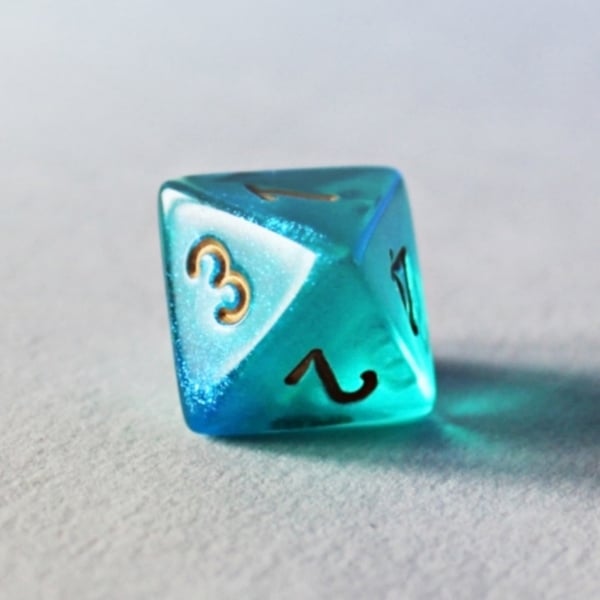
The D8 is similar to two D4s glued together. Each face is a triangle. The D8 has an average roll of 4.5 and while not as commonly used as the D6 shows up in several areas.
The D8 is often used for middling size weapons like the rapier and longsword, and shows up when a higher die is required for spells.
Some cantrips like Chill Touch do a D8 of damage, and some class features that ordinarily roll a d6 can eventually be upgraded to a D8.
D10 (Pentagonal Trapezohedron)

The D10 is primarily used in DnD for a few spells (like Eldritch Blast) and some of the rarer weapons.
The pike, halberd, glaive, and heavy crossbow all use a D10 for their damage roll, which, with an average roll of 5.5, give it a noticeable heft.
The standard set of DnD dice includes two D10. One features regular numbers while the other displays a pattern of 10 instead of 1, 20 instead of 2, etc.
This is so that one might simulate a D100 roll. When rolling percentile dice, the altered die takes the place of the tens digit while the regular die takes the place of the ones digit.
A roll of 100 is shown by 00 on the altered die and 0 on the regular d10. Interestingly, several RPG systems have adopted the D10 as their own.
Both Exalted and the White Wolf games feature systems that rotate entirely around the D10 to the exclusion of other kinds of dice.
D12 (Dodecahedron)
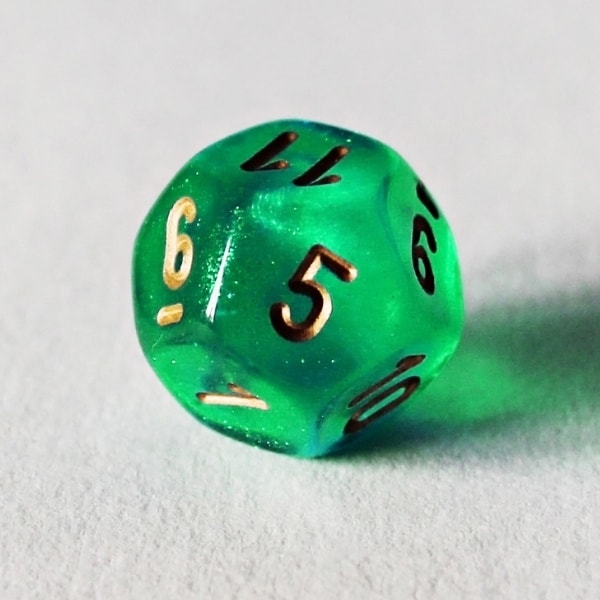
The D12 is a rarely used die in DnD, primarily showing up for certain excessively large weapons like the greataxe.
With an average roll of 6.5, greataxe wielders have the heftiest weapon die in the game.
These dice are sometimes known as the Barbarian’s dice becauseBarbarians frequently wield the greataxe and use a D12 for their hit die.
Many players enjoy using the D12s pentagonal faces for stacking, for they stack excellently.
D20 (Icosahedron)
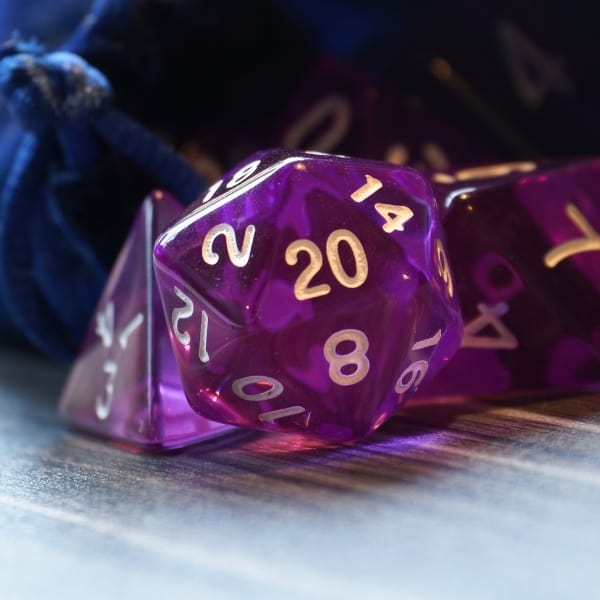
The D20 is the most famous DnD die, and it deserves its fame.
There is evidence of people rolling D20s as early as Ptolemaic Egypt from the 2nd century BC, more than 2000 years ago.
Each face of a D20 is an equilateral triangle which, combined with the largest number of sides, makes this die roll extremely well as it is the closest to a sphere out of the classic 6.
The D20 has an average roll of 10.5, but this rarely matters because it is never used for damage or healing rolls.
Instead, the D20 is the die that decides the success or failure of actions as varied as attacking an enemy to negotiating a surrender or surviving in the woods.
Each roll of the D20 has a 5% chance to land on a particular number, making it easy to calculate the odds of success for any given activity and the effectiveness of any bonuses.
A +2 weapon for example means that that weapon will be 10% more accurate, and a +5 to a particular ability means your chance to succeed with that ability is raised by 25%. Since DnD several RPG systems have also chosen the D20 as their standard decision-making die.
Fair and Unfair Dice
From RPG players to casino guests, many people have cause to ask “Are these dice fair?” This can be a tricky question to answer.
In the world of dice, fair can mean different things depending on who you ask.
Ask a random person on the street what it means for a die to be “fair” and they’ll probably tell you that it means there’s an equal chance for the die, when rolled properly, to land on any given side.
If you ask a mathematician, however, you’ll get a completely different answer.
Of course, according to the simple definition of fair, most dice actually aren’t perfectly fair. The dots on a d6, and to a lesser extent the grooves carved in other dice to denote numbers make some faces heavier than others.
This is because the material worn away to engrave each number is unequal between faces, more material is removed for the 8 face than the 1.
This results in a subtle change in the probability distribution. It’s a small change, but it is a change. Casinos keep specially prepared dice in stock which has special paint that matches the density of the material so that the dice rolls as if it was never altered.
They also frequently retire dice so that damaged dice don’t cause additional alterations to the frequency of certain rolls.
For most uses, however, especially for RPGs, dice don’t have to be perfectly balanced. As long as, say, a D20 has very close to a 5% chance to land on any given side it can be said to be “fair enough”.
After all, coins are technically heavier on one side than the other, but the difference is only a single percent change, 51/49 rather than 50/50.
If you’re worried that your dice might land on some sides more often than others, it’s possible, but it probably won’t affect you very much.
And if you’re worried your dice were intentionally weighted you can always suspend them in milk to see if they tend to turn up one side more than others. But we did mention another way for dice to be fair.
What about the mathematical “fairness” of dice?
According to Euclid, there are only 5 mathematically “fair” dice; the D4, the D6, the D8, the D12, and the D20.
Mathematically fair dice have transitive symmetry, you can rotate the shapes, transform them in any way that can be reversed, and they remain exactly the same. Edges, vertices (points where edges meet), and faces will all look the same.
You can try this at home too, just get one of the above dice and rotate it around. If you have a set of DnD dice you can compare a D6, a cube, to a D10, a pentagonal trapezohedron. When you rotate the D10 around, it’ll look different from different angles!
Whether you’re rolling fair dice or mathematically fair dice you can rest easy that the numbers they give you will be pretty random.
But not all dice are created equal. Jokes abound about the “D1” a one-sided die, but what if you wanted to roll a D5, or a D27 or truly roll a D100? Keep reading to find out about some of the more exotic polyhedrons in the dice universe. And if you want to learn more about fair dice and dice probabilities check out this video!
Rare Dice
While the standard dice are well known and familiar, more… exotic dice do exist. Here are some of the more interesting dice that people make.
The D1
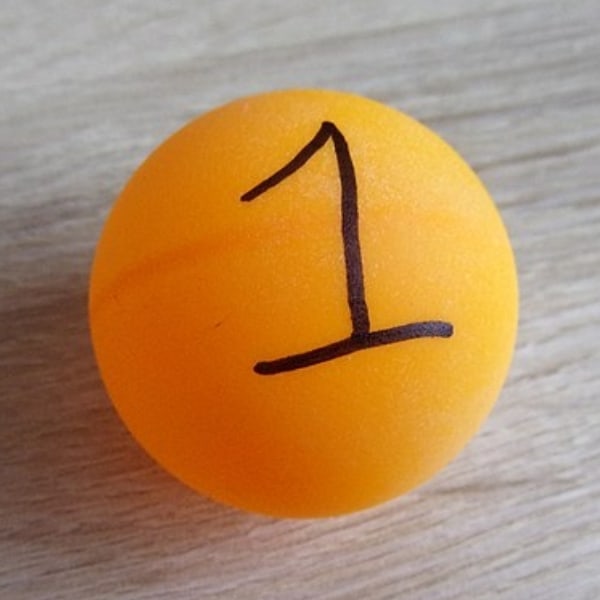
This joke die is often just a ball with a single number on it, you can make one yourself with a ping pong ball and a sharpie!
However, sometimes you can find these in the form of a mobius strip, an oddly twisted and looped ribbon that only has one side (if you ignore the edges of course!).
Rounded Rhombicuboctahedron
This die has 26 sides, 8 triangular and 18 squares. The triangular faces are rounded so that when rolled the die cannot land on one of them and is forced to land on one of the square faces. Thus, a D18 is created.
The Zocchihedron (100-sided)
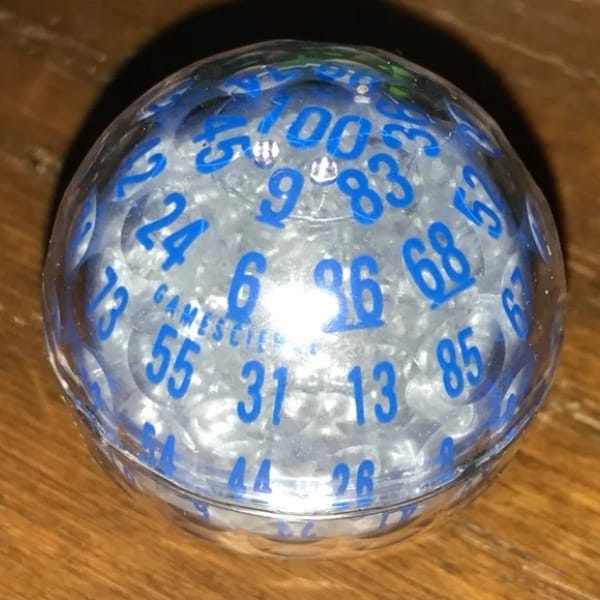
The Zocchihedron is an attempt at creating a 100 sided die, though it looks more like a sphere with flat bits. While it has 100 sides, it isn’t a fair die by either of the definitions.
There is not an even chance of getting any particular result, numbers closer to the “poles” of the die tend to crop up much less than numbers placed elsewhere as the design necessitates the numbers in that area get less surface area than others.
Spherical Dice
These dice are perfect spheres with the usual numbers or dots painted along the outside.
They are rolled in the same way as regular dice, but to prevent them from rolling endlessly or landing between numbers they have a clever internal mechanism.
A hollow space is created within the sphere in the shape of the dual polyhedron of the dice meant to be replicated. A dual polyhedron of a polyhedron swaps vertices and faces, though the exact definition isn’t important.
What matters is that a small weight is placed into the hollow of the sphere, and where this weight falls decides which number appears on the spherical die.
Long Dice
Long dice are a way to effectively create a die of 5 or 7 sides. They resemble rectangles, though of course, they have more long faces.
Each end is rounded so that the die cannot land ‘upright’.
3 sided long die resembles a prism, though of course a prism actually has five sides. It is just that the two ends don’t count.
Alternatively Numbered Dice
If you really need to roll a D3, just pick up a D6! You can achieve the same effect as a D3 by rolling the die and counting the numbers 4, 5, and 6 as the numbers 1, 2, and 3 respectively.
To make things simpler several kinds of classic dice are sold with alternate numbering schemes, repeating some numbers in order to create the effect of a D3 or a D5.
The Final Roll
From handpainted to cast iron, old knucklebones made of real bone to the modern D6, dice come in a variety of shapes, sizes, colors, and materials.
It seems that humanity has always wanted some way to randomly generate numbers to play games of chance, or just with elements of chance.
Taken like that, DnD is one of the more recent entries in a long line of such games.
Nowadays we enjoy a dice renaissance. You can get any kind of dice you want, even one’s that no one makes with a 3d printer or wood carving tools.
Dice look good too these days, are made of durable materials and come with soft velvet bags to keep them safe.
More is known about the mathematics and physics of dice than has ever been known, you could dedicate your career as a mathematician to studying the statistics and topology of dice.
And thanks to DnD, you can get dice anywhere.
Truly, whether you love dice for their interesting mathematical properties or simply their shiny appealing shapes, this is a great time to be alive.
Growing up I spent most of my time reading, so when I first started playing RPGs in middle school and got a copy of DnD 3.5’s rules I loved their collaborative take on storytelling. These days I like to use RPGs to develop my creative problem-solving skills as well.
